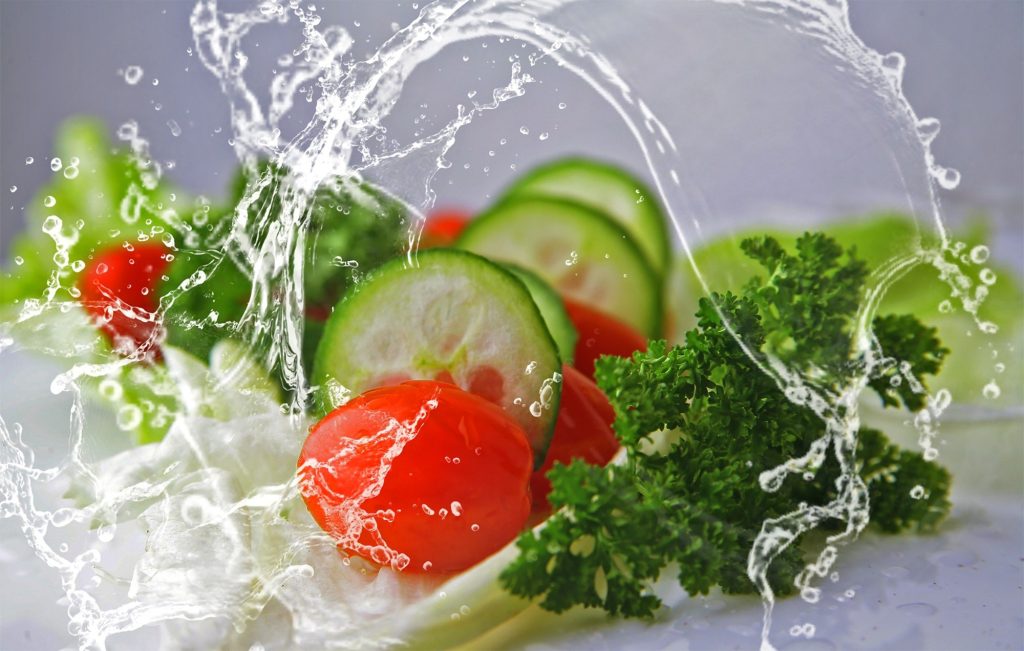Fun fact: the word “salad” actually has its roots in the word “salt.” A salad is, after all, a bunch of salted vegetables.
What’s great about salads is that you can make them with practically anything. All you need are a few popular vegetables tossed together with dressing–and maybe some chicken strips. If you’re tired of classic lettuce and croutons, though, what are your options?
The limits of a salad’s ingredients depend on your imagination. Join us as we discuss the best popular veggies (and fruits) to include.
Popular Vegetables for Salad Greens
Let’s start with the base: the salad greens. Without greens, a salad would have only a fraction of its health benefits. Green vegetables are low in calories, yet packed to the gills with minerals, vitamins, and fiber.
To make things easy, you can choose any leafy greens you like. Every one on this list has its own unique health benefits.
If you don’t have any leafy greens, then grains or beans will work. These tend to stack on the protein more than vitamins and minerals. If anything, add them as filler for additional nutritional content.
It’s best to get a blend of spring greens and crunchy greens. This improves the health benefits, taste, and texture of the salad.
Choose Spring Greens
Around springtime, you’ll likely see these spring greens on your grocer’s shelf. They don’t have the same texture as crunchy greens, but they pack more nutrition. Spring greens include the following:
- Watercress
- Arugula
- Chard
- Mustard greens
- Beet greens
- Spinach
Choose Crunch Greens
Crunchy greens may not be the most nutritional kind, but they’re still better for you than a Big Mac. Their main claim to fame has more to do with mouth-feel and texture. As the name implies, they crunch when you bite into them–a more tactile, pleasing experience.
- Iceberg lettuce
- Romaine lettuce
- Leaf lettuce
- Frisee
- Bibb
- Radicchio
- Endive
- Escarole
- Cabbage
Pro tip: chill them before serving. Having them cold makes for a crunchy experience that feels like morning frost.
Iceberg vs. Romaine Lettuce
Iceberg and romaine lettuce are the two most popular kinds you will find on any shelf. What’s the difference?
Simply put, iceberg lettuce is very low-nutrient in comparison. It’s not utterly devoid of any nutritional value, contrary to popular belief.
Romaine, by comparison, is practically dripping with nutrition. Not just your average vitamin C and A, but vital K as well. You’ll also find folate and a banana lover’s potassium.
Buying Fresh vs. in a Bag
Buying fresh will always be ideal – but what about purchasing your leafy greens in a bag?
Just check the expiration date. That best-by-date gives you a clear idea of when the nutritional content will begin to decline. So, don’t stress out too much if you decide to go with spinach in a bag.
Colorful Veggies Add-Ins
You’ve got the base of the salad: the leafy and crunchy stuff. Now, it’s time to venture beyond the color green. The healthiest salads include the widest range of colors possible.
Red
Vegetables (like red tomatoes) get their color from lycopene, a pigment. This is actually an antioxidant that’s great for heart health and reducing cancer risk. Here are some red veggies:
- Tomatoes
- Radishes
- Red onion
- Red peppers
- Beets
- Red Potato
Orange
Remember how your mother always told you that carrots would improve your eye health? This is true, thanks to zeaxanthin and lutein in orange foods. Let’s look at some orange veggies:
- Carrots
- Orange peppers
- Squash
- Orange tomato
- Sweet potato
White and Yellow
The carbs in onion and fiber in corn will round out your salad. White veggies are some of the most diverse varieties compared to other colors. Here are a few:
- Sweet onion
- Corn kernels
- Yellow tomato
- Yellow beets
- Jicama
- Mushrooms
- Shallots
- Cauliflower
- White asparagus
Green, Blue, and Purpose
Different types of cucumber are the best non-leafy greens to add to your salad. Find out more about cucumbers at this link: https://amaralfarms.com/2023/03/17/is-a-cucumber-a-fruit-or-a-vegetable/. Here are some options:
- Purple potatoes
- Purple cabbage
- Purple peppers
- Green onion
- Eggplant
- Green Tomato
- Artichoke hearts
- Broccoli
- Chilled peas
- Cucumber
- Brussel sprouts
- Celery
Fruit for Salad
Fruit adds a nice, sweet little garnish to your salad. In most cases, you will only be adding them sparingly. Slicing them up and sprinkling them over the veggie base will do just fine.
Here are some fruits we recommend for your salad:
- Peaches
- Strawberries
- Plums
- Cherries
- Elderberries
- Figs
- Blueberries
- Watermelon
- Nectarines
- Mango
Protein
This one is optional. We highly recommend adding some meat or fish for protein content. Here are some good options for any salad:
- Chicken breast strips
- Steak strips
- Pork cuts
- Tuna
- Salmon
Raw vs. Cooked Veggies/Fruits
One question many people ask is whether or not they should cook their fruits and veggies. Cooking can evaporate away some of the nutritional content. Unless you stew them in their juices, a salad will lose the vitamin punch it once had.
We recommend getting all of your greens fresh from the grocery store or garden. This is when they have peak nutritional content and taste the best. Including some cold, crispy greens will do just fine though.
However, having some fried chicken on top of stewed peaches tastes delicious. Cooked cabbage is more pleasing than raw, and so on.
With that said, we recommend only cooking a portion of the vegetables or fruits. Otherwise, you’re throwing away what makes these vegetables so great.
Make a Wonderful Salad Today
Regardless of which popular vegetables you choose, it’s hard to get a salad wrong. Just make sure it has a leafy green and crunchy base. After that, toss in some protein and sprinkle on some fruits.
Looking for other easy, nutritious meal options? Follow our blog for more inspiration.
James Martin is a passionate writer and the founder of OnTimeMagazines & EastLifePro. He loves to write principally about technology trends. He loves to share his opinion on what’s happening in tech around the world.



